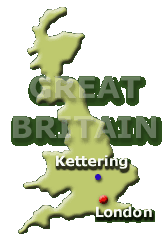
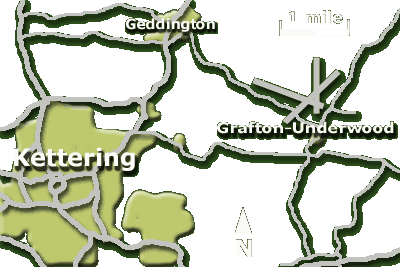
Following the involvement of the United States in World War II, the British and USA governments agreed that the British Government would provide port and airfield facilities and in return, the USA would supply the British with arms.
An airfield was constructed just to the north of the village of Grafton, originally as a satellite airfield to the one nearby at Polebrook, and intended to be available in the event of Polebrook becoming unserviceable due to enemy action.
Built by George Wimpey & Company Limited, in 1941, improvements were made throughout the period of WWII. The airfield covered approximately 500 acres and during its construction two avenues of trees were destroyed along with many hedgerows , as well as the buildings of Rectory Farm and Grafton Lodge Farm.
The airfield was bisected by the Grafton to Brigstock Road and, traveling north, the site of the airfield itself is to the left with the living and domestic areas to the right. Full use was made of the natural woodland for camouflage. The living area consisted mainly of wood and canvas hut constructions, the more permanent buildings being brick-built mess halls and clubs. The whole site accommodated up to 3,000 personnel and had all the facilities needed, including a hospital, cinema, and chapel.
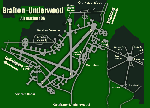
At the time of American involvement, Grafton happened to be the first airfield available and so for the remainder of the war it was known officially as Station 106, becoming an integral part of the 8th Air Force. The first unit to move in, on May 12, 1942, was the 15th Bomb Squadron which had to use American-built Douglas Boston twin-engine bombers borrowed from the Royal Air Force.
This unit moved to Molesworth on June 9, 1942, and was followed on July 6 by the 97th Bomb Group operating the Boeing B-17 flying Fortress. On August 17, 1942, his unit dropped the first bombs carried by the 8th Bomber Command on the railway marshalling yards at Rouen, France. The 97th was withdrawn on September 8 for service in North Africa, and four days later Station 106 was occupied by the 305th Bomb Group (H) pending their departure to their permanent base at Chelveston on December 11, 1942. The airfield was briefly occupied between April 16-May 2, 1943, by the 96th BG while waiting to move to Andrews Field in Essex.
The last unit to move into Station 106 on May 25, 1943, was the 384th BG (H), which was to remain at Grafton until the cessation of hostilities in Europe. It was the 384th that had the distinction of dropping the last bombs carried by the 8th AF when they bombed the Skoda Works at Pilsen, Czechoslovakia, on April 25, 1945.
The 384th BG, during its two years at Grafton, built up an enviable reputation, and amongst its many achievements were 2 Divisional Unit Citations for Heroism and Dedication to Duty against Extreme Odds; over 1000 personnel received the Distinguished Flying Cross. They achieved 9,348 credited sorties with their B-17 Flying Fortresses, losing 159 aircraft and 1,579 personnel, but claiming 165 aircraft.
Photos courtesy of Peter Hinson, 1998.
Amongst the more permanent reminders of the 384th BG (H) presence at Grafton in WWII is a granite memorial situated on the airfield, a stained glass window in the Parish Church of St. James the Apostle (during weekdays, inquire at the Post Office for the key), a Saint Christopher statue and bell in the Parish Church of Saint Peter and Saint Paul in Kettering.
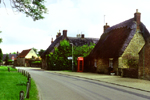
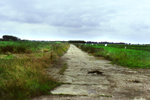
However, only sections of the 3 runways and very little of any of the base's buildings remain.
KEEP THE SHOW ON THE ROAD
Take A Tour of Grafton Underwood Village
View Mark Brotherton's Photos of Grafton Underwood